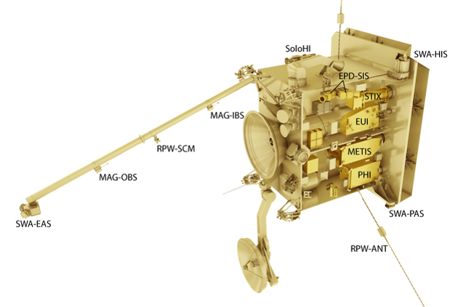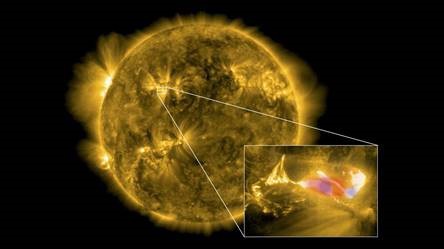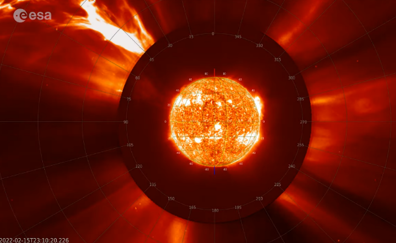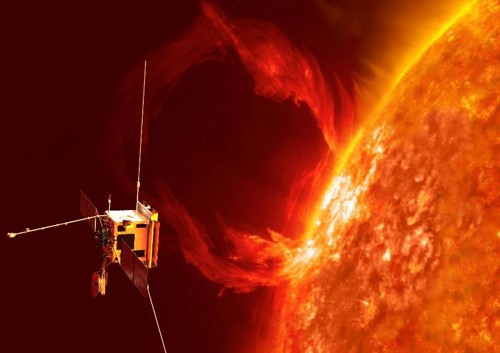Client
The European Space Agency (ESA) is an intergovernmental organisation dedicated to the exploration of space, with 22 member states. Established in 1975, ESA has a staff of more than 2,000 with an annual budget of about €4.28 billion / US$5.51 billion (2013).
ESA's space flight programme includes human spaceflight, the launch and operations of unmanned exploration missions to other planets and the Moon, Earth observation, science and telecommunication.
The research centre for ESA science missions is based at ESTEC (European Space Research and Technology Centre) in Noordwijk, Netherlands.
Project

Solar Orbiter is a mission dedicated to solar and heliospheric physics. The programme outlines key scientific questions which need to be answered about the development of planets and the emergence of life, how the Solar System works, the origins of the Universe, and the fundamental physics at work in the Universe.
The spacecraft carries a suite of 10 state-of-the art instruments to observe the turbulent, sometimes violent, surface of the Sun and study the changes that take place in the solar wind that flows outward at high speed from our nearest star.
One of those instruments is the Extreme Ultraviolet Imager (EUI) which is a suite of three ultraviolet telescopes that will observe the Sun in four bandpasses. The suite is equipped with a single-band and a dual-band High Resolution Imager that will observe the Sun at high spatial resolution and cadence, along with a dual-band Full Sun Imager that will continuously monitor the Sun. The Centre Spatial de Liège (CSL) is responsible of the development of the EUI.
DELTATEC has been selected to design the three Focal Plane Assemblies (FPA) which are the cameras ensuring the mechanical, thermal and electrical accommodations of the detector. It includes the detector proximity electronics called “Front End Electronics” (FEE), cooling straps and a mechanical housing. DELTATEC is also responsible of the manufacturing, the assembly and the verification of the cameras.
Challenge
In addition to traditional space challenges (radiation hardness, high reliability…), one can underline the specific following ones:
- Electronics: The designed proximity electronics has to control and capture images from a project-custom imaging CMOS sensor (9 Mpixels) while the power consumption of the camera is limited to 2 Watts.
- Mechanics: With a mass budget of less than 1kg by camera, the housing has to deal with extreme vibration conditions met during launch.
- Thermal management: To ensure the best image quality, the imaging sensor must operate at -40°C while the optical bench temperature can rise up to +50°C.
Solution
 One of the 3 EUI Focal Plane Assemblies
One of the 3 EUI Focal Plane Assemblies
The front end electronics is built around an antifuse FPGA from Microsemi (RTAX family), able to work under the severe space conditions (radation and temperature). The PCB is designed using a mixed flex-rigid technology to accommodate the housing perfectly.
The mechanical housing design has the following very specific features:
- Invar parts between the optical bench and the image sensor to avoid any thermoelastic deformation or displacement.
- Titanium feet to withstand the thermoelastic forces created between the carbon optical bench and the aluminium camera structure.
- Very light aluminium structure manufactured as a single part using the wire-cut Electrical discharge Machining (EDM) technology.
To comply with the severe temperature specifications, custom thermal straps have been designed to create a high-efficiency conductive thermal path between the image sensor and the satellite heatsink. Those straps are made of copper with an encapsulated structure of graphite which gives an excellent thermal conductivity and a very small density (mass).
Solar Orbiter journey
January 3rd, 2023 - Mercury’s black disc helps sharpen Solar Orbiter’s view
On January 3, 2023, Solar Orbiter captured a rare and exciting event: the transit of inner planet Mercury in front of the Sun.
Several instruments on board the Solar Orbiter captured the transit while the Extreme Ultraviolet Imager (EUI) took a movie of the planet’s progress (Mercury appeared as a perfectly black circle moving across the face of the Sun).
Our company, DELTATEC, is proud to have contributed to this project by working on the electronic components of the extreme ultraviolet imager, of which you can admire the video below.
The study of this event will further improve the quality of the Solar Orbiter data.
We are excited to be part of this mission and look forward to contributing to future missions that will expand our understanding of the solar system and beyond.
October 12th , 2022 - Solar Orbiter’s unprecedented view of the quiet corona
The ESA-led Solar Orbiter mission has experienced its second close encounter with the Sun. The spacecraft’s Extreme Ultraviolet Imager (EUI) returned the highest resolution movie of the quiet corona ever taken with any instrument.

March 26th, 2022 - Getting closer and closer to the sun within the orbit of planet Mercury
On March 26th, the Solar Orbiter returned spectacular imagery during its first close encounter with our home star. Detailed new movies show activity in the solar atmosphere and reveal a variety of features, including something scientists are nicknaming ‘the hedgehog’ with spikes of hot gas reaching out in all directions.

Video of Solar Orbiter's first close encounter
RTBF mentions Solar Orbiter !
February 15th, 2022 - Giant solar eruption seen by Solar Orbiter
The ESA/NASA Solar Orbiter spacecraft has captured the largest solar prominence eruption ever observed in a single image together with the full solar disc. These images have been captured by the EUI instrument (Extreme Ultraviolet Imager) which consists of 3 cameras developed by DELTATEC.

July 16th, 2020 - The closest-ever look at the sun
The first images from Solar Orbiter have revealed omnipresent miniature solar flares, dubbed ‘campfires’, near the surface of our closest star.

February 10th, 2020 at 5:03 CET - Launch
The Solar Orbiter space mission, carried by ESA in collaboration with NASA, has been launched from Cape Canaveral in the United States. The first Sun images should reach us very soon...

